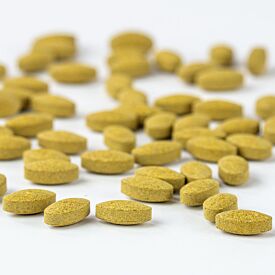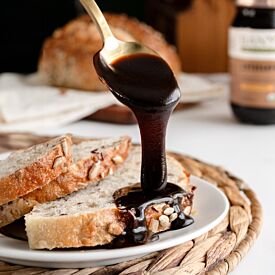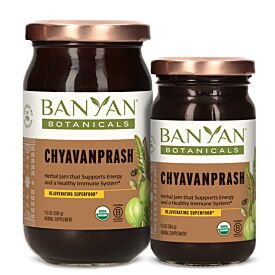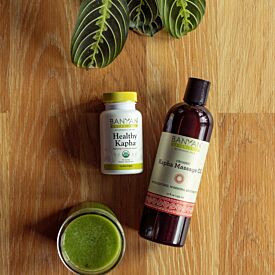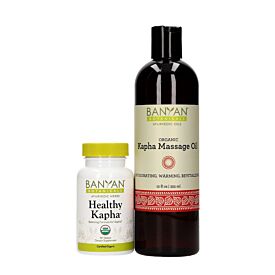Fall for Pitta-Kapha and Kapha-Pitta

Though vata is not a primary player in your constitution, you can still safeguard your well-being with some vata-pacifying habits. At the same time, you’ll want to give some peripheral attention to clearing excess pitta (left over from the summer) and preventing kapha-aggravation (in preparation for the winter ahead).
Foods to Favor
As you strive to eat seasonally appropriate foods, be mindful of keeping pitta adequately cool (especially in the early fall) and also be careful not to smother kapha with too many heavy, oily foods.
Focus on eating autumn foods that are good for both pitta and kapha, like apples, berries, soaked prunes, soaked raisins, asparagus, cilantro, green beans, leeks, okra, cooked onions, rutabagas, amaranth, quinoa, basmati rice, seitan, mung beans, cottage cheese, ghee, goat’s milk, shrimp, and sunflower seeds.
Acceptable Seasonal Indulgences
Pitta and kapha both benefit from the bitter and astringent tastes, so you may be able to enjoy some raw fruits and vegetables, and a wider variety of beans—especially in the early part of the fall.
Ground your energy with some light, sweet treats like rice puddings, date shakes, and sun balls, but in small quantities so as not to overwhelm your digestion. You could also try a cup of hot, spiced, goat’s milk (with a little nutmeg, cinnamon, ghee, and sugar) before bed to promote sound sleep.
Foods to Minimize
While you may not have to be as diligent about avoiding vata-provoking foods as some, it would be best to minimize your exposure to fall foods that aggravate both pitta and kapha—things like ripe bananas, green grapes, grapefruits, lemons, molasses, brown rice, urad dal, hard cheeses, sour cream, store-bought yogurt, beef, salmon, and saltwater fish.
Be careful, also, not to overdo nuts. Beyond that, keep a watchful eye out for signs of excess pitta (acidity, diarrhea, rash, or sour taste), excess kapha (lethargy, low energy after meals, brain fog), and excess vata (gas, bloating, constipation, dry skin) and adapt your diet to your day-to-day needs.
Lifestyle Adjustments
The elements of autumn that are likely to be most aggravating to you are the cool weather, lightness, and mobility. You can focus on staying comfortably warm, grounding yourself without indulging lethargy, and stabilizing your nervous system with a regular routine.
Aim for moderate-intensity with exercise but be careful not to overheat. In your yoga practice, you can move at a more moderate pace and push yourself more than some, but don’t develop a habit of straining. Include standing poses, backbends, forward bends, twists, and moderately-paced flows in your asana practice, and be sure to close with some time in Savasana.
In general, try to strike a balance this fall between grounding and stabilizing vata, pacing pitta, and invigorating kapha.
You may also find it helpful to read both the pitta and kapha fall guides for some additional tips on supporting these doshas during the fall.



